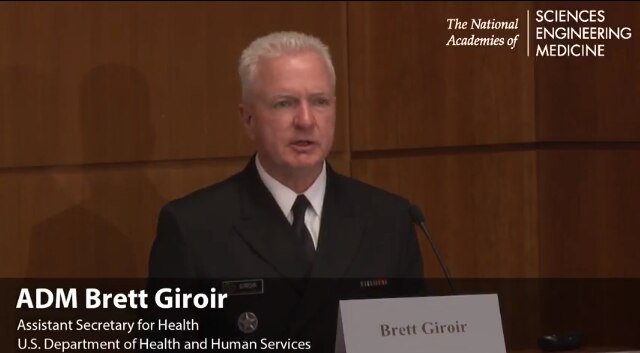Cross-posted from the Office of HIV/AIDS & Infectious Disease Policy Viral Hepatitis Blog
The opioid crisis in the United States is devastating the lives of millions of Americans. Perhaps overshadowed by the alarming rise in overdoses and deaths is the accompanying numbers of injection-related infectious diseases. Opioid overdose deaths increased fivefold from 1999 to 2016, and new hepatitis C infections more than tripled from 2010 to 2016.
Some communities that have been hardest hit by the opioid crisis have also seen associated increases in hepatitis B and C and other infections, such as endocarditis, septic arthritis and abscesses, driven by increases in the numbers of people who inject opioids.
Earlier this year, the HHS Office of the Assistant Secretary for Health’s Office of HIV/AIDS and Infectious Disease Policy and the Office on Women’s Health sponsored a workshop at the National Academies of Sciences, Engineering and Medicine to explore the infectious disease consequences of the opioid crisis and consider opportunities to better integrate effective responses. A detailed summary of the proceedings is newly available.
One of HHS’s top priorities is the implementation of a comprehensive national opioid strategy. The HHS five-point opioid strategy emphasizes the need to empower local communities to assess and respond to local needs, including both drivers and consequences of the opioid crisis.
The National Academies’ workshop highlighted the importance of addressing infectious diseases as part of an improved, comprehensive opioid response.

The opioid crisis is part of a set of interconnected health problems, often called syndemics, because they have common root causes and interact synergistically, with one problem making the others worse. Because syndemics are interconnected, coordinated efforts are required across multiple programs and partners to successfully overcome the set of problems and their consequences.
The federal government can’t fight this battle alone. We recognize that some of the best and most effective solutions will come from healthcare providers, community leaders and law enforcement who are dealing with the opioids and infectious diseases crisis on the ground.
Indeed, workshop participants who joined from across the country included experts in infectious diseases, addiction medicine, correctional health, harm reduction and law enforcement. They discussed patient-centered strategies that may be effective in reducing the infectious disease consequences of injection drug use, strategies that could be implemented using existing resources as well as those that require additional funding, and strategies that can work within and across the public health, healthcare and criminal justice systems. Many of the workshop strategies described could also help achieve the goals of the National HIV/AIDS Strategy and the National Viral Hepatitis Action Plan, which are also overseen by OASH.
The workshop proceedings and proposed strategies can provide a springboard for intensified and informed discussions about effective approaches to support the integration of infectious disease prevention and treatment into our comprehensive opioid strategy at the federal, state and local levels.
We look forward to reviewing the published proceedings and identifying action steps we may consider as we continue our efforts together to combat the opioid crisis and the rise in related infectious diseases.
The “Integrating Responses at the Intersection of #Opioid Use Disorder and #InfectiousDisease Epidemics: Proceedings of a Workshop” is now available to download via @NASEM_Health @HHS_ViraHep. Learn more: https://go.usa.gov/xUXtC #OpioidCrisis.








Comments
Comments